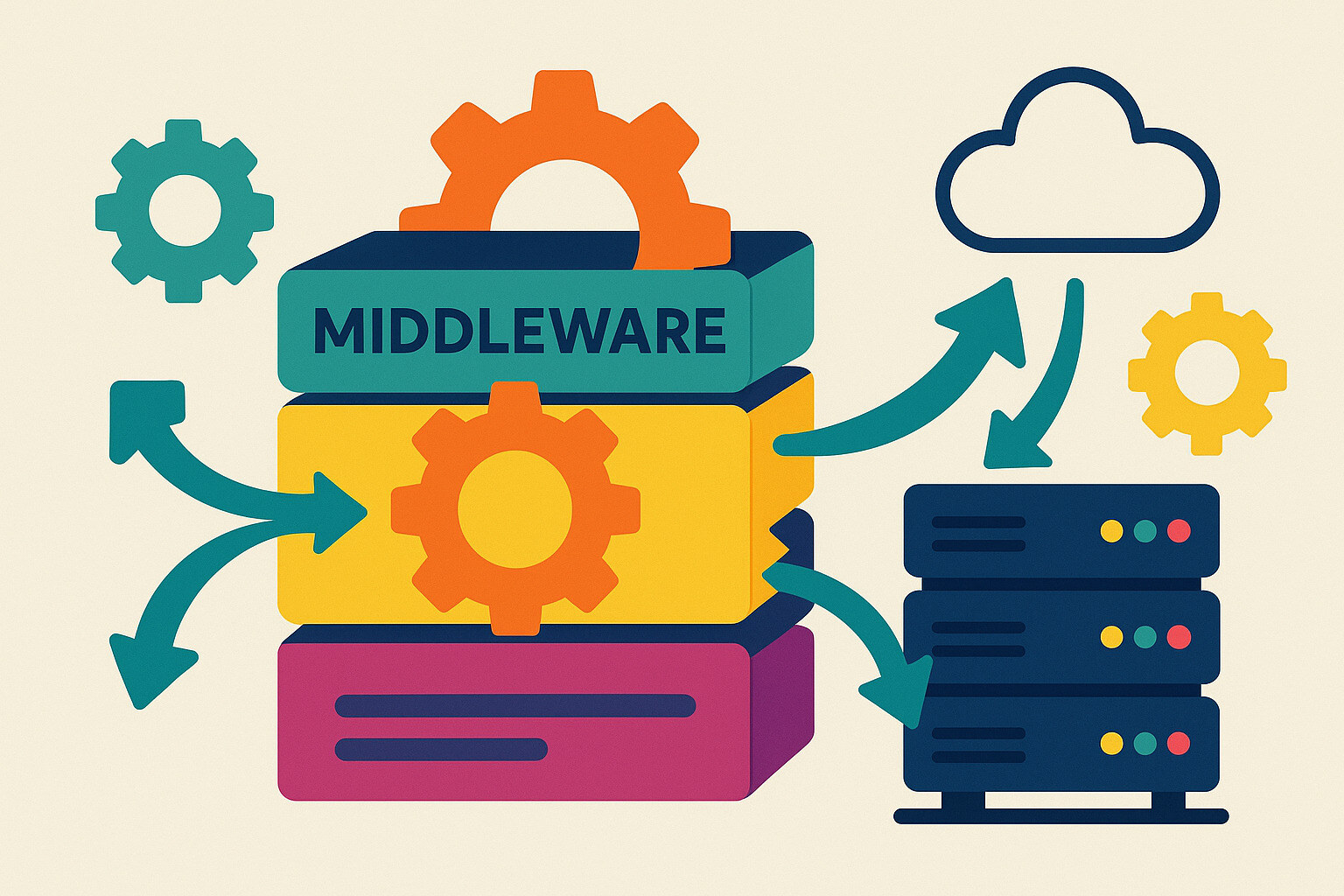
Building reliable, flexible systems through modular design and service orchestration
Middleware acts as the connection point between applications, services, and data. In systems where everything from customer portals to financial tools must work together, the middleware needs to scale without slowing down. If one part gets overloaded, the whole chain can feel the impact.
Spagic provides a flexible foundation to design that bridge. It supports modular components, custom processes, and shared resources. These tools help teams connect legacy systems with cloud services or streamline tasks between internal apps and third-party platforms.
As more systems link together, demands on the middleware grow. Without a structure that can stretch and adapt, response times lag and stability drops. That’s where building a scalable middleware architecture with Spagic starts to show its value.
Structuring middleware into functional layers
A scalable architecture begins with clear boundaries. Splitting middleware into layers—such as routing, transformation, and service orchestration—keeps things organized and easier to manage. Each layer can then grow on its own without affecting others.
In Spagic, workflows are built using visual tools that map how data moves and changes. One workflow might focus on converting data formats, while another handles business logic. Each serves a focused purpose, which makes testing and scaling smoother.
For example, a company that handles orders from multiple sales channels can create a routing layer that normalizes requests before sending them to the order system. As more channels are added, the routing logic grows—without touching the core order processing flows.
Managing components through modular design
A scalable middleware architecture doesn’t mean making one giant flow that does everything. Instead, Spagic encourages building small, reusable components. Each one can handle a task like data mapping, service calling, or logging independently.
Modular design helps reduce duplicate work. If several workflows need to validate customer IDs, one shared component can handle it. That module becomes part of the toolkit, ready to drop into any future flow without rewriting logic from scratch.
This approach also supports parallel development. Teams can build or update different parts of the system without stepping on each other’s work. With clear module boundaries, scaling becomes a matter of connecting or replicating the right parts as demand grows.
Integrating messaging systems for asynchronous tasks
As traffic increases, synchronous communication can become a bottleneck. Every step waits for the one before it, slowing the system down. Spagic supports messaging systems like JMS and AMQP, which allow tasks to run asynchronously.
Asynchronous workflows keep data moving even when individual services are busy. Instead of waiting for a response, messages are dropped into queues and processed when ready. This setup helps absorb traffic spikes and improves system reliability.
A practical use case would be sending out confirmation emails. Instead of blocking the main order workflow, the email task places a message in a queue. A separate service picks it up, sends the email, and logs the status—all without slowing the order process.
Distributing processes across multiple nodes
A single Spagic server can do a lot, but for true scalability, processes need to run across multiple nodes. Load balancing distributes the work and ensures no single node becomes a weak point. If one node goes offline, others continue running.
This setup is especially helpful during busy periods or when processes take longer to complete. Spagic’s architecture allows workflows to be deployed to different nodes, each with its own runtime. Monitoring tools then track which nodes handle which tasks.
For instance, if an organization processes invoices from regional offices, each region can use a dedicated node. These nodes run the same logic but handle separate data streams. This improves performance and keeps workflows local to their data sources.
Optimizing database interactions in middleware
Many middleware tasks involve reading or writing to databases. But under heavy load, database operations can slow everything down. That’s why it’s important to tune queries and use connection pools properly within Spagic’s integration processes.
Using a connection pool ensures that the system doesn’t open too many database connections at once. Spagic lets developers configure these settings to match the expected load. Short, focused queries reduce lock times and keep workflows moving.
As an example, imagine a system that checks stock levels during checkout. A lightweight query returns the result fast, freeing the connection for the next task. When hundreds of checkouts happen at once, the efficiency of each query affects the entire system.
Monitoring workflow health in real time
As systems grow, so does the need to know what’s going on inside them. Spagic includes monitoring tools that show the status of each workflow, the time it takes to complete, and whether any steps fail. This visibility is essential for maintaining performance.
Metrics help spot slow tasks before they cause bigger issues. They also show how traffic moves through the system at different times. If one workflow starts backing up, alerts can be sent or actions triggered to adjust behavior.
Teams can also use logs to trace how data moved through a process. This helps when troubleshooting or fine-tuning for better performance. With real-time monitoring, Spagic becomes a living system that responds to what’s happening now—not just what was planned.
Applying caching strategies to reduce system strain
Not every call to a service or database needs to be repeated. For data that changes rarely—like tax rates, reference lists, or static templates—Spagic can use caching to avoid redundant work. This lightens the load and speeds up overall performance.
Spagic supports both in-memory and external caching tools, depending on how long the data should be kept and who needs to use it. Cached data can be shared across workflows or refreshed on a schedule to stay current.
An example would be currency conversion rates. If a system needs rates for pricing and reporting, caching the daily rates reduces API calls and keeps things consistent across workflows. It also makes scaling easier, since each task doesn’t need to hit the same service every time.
Adapting architecture as requirements change
No system stays the same forever. New partners, tools, or data formats will eventually need to be added. A scalable middleware setup supports this kind of change without major disruption. That’s where Spagic’s modular and layered design continues to help.
Instead of redesigning the entire system, new components can be plugged into existing flows. New data types can be routed to familiar handlers with minor updates. Legacy processes can stay untouched while newer parts of the business connect through the same middleware.
For example, adding a new payment provider might just mean creating a new adapter module and pointing existing workflows to it. The rest of the system continues to run as before, but with expanded capabilities.
Aligning system growth with middleware flexibility
Scalability isn’t just about speed—it’s about how easily a system can stretch. Spagic offers a strong framework for growing systems by breaking down processes, sharing components, and managing load intelligently.
By designing middleware around clear layers, reusable modules, and smart integration points, teams can build systems that grow alongside the business. Whether it’s more users, more services, or more data, the architecture adjusts without starting over.
With the right setup, Spagic becomes the backbone of a reliable, scalable platform—one that supports change, handles complexity, and stays ready for what comes next.

